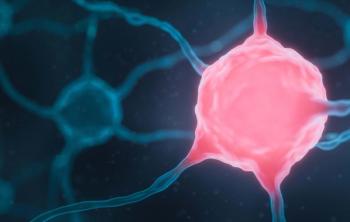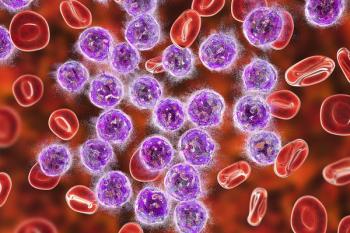
- ONCOLOGY Vol 38, Issue 4
- Volume 38
- Issue 4
- Pages: 139-140
Updates in Breast Cancer Care From the 41st Annual Miami Breast Cancer Conference
Several presentations from the 41st Annual Miami Breast Cancer Conference focused on new and evolving data in the space, according to Neil M. Iyengar, MD.
The 41st Annual Miami Breast Cancer Conference in March 2024 highlighted a wealth of new and evolving data in the field. Key abstracts and presentations focused on novel endocrine therapies for hormone receptor (HR)–positive metastatic breast cancer (MBC), postmastectomy radiation after pathologic complete response (pCR), sequencing of antibody-drug conjugates (ADCs) in HER2-zero and HER2-low tumors, and emerging agents to manage HR-positive tumors after progression on CDK4/6 inhibitors. Attendees also reviewed and contextualized practice-changing data reported at recent congresses. Below are key points from some of these updates.
Several novel endocrine therapies recently have been made available or are under development for the treatment of patients with HR-
positive MBC. Updated data for the oral selective estrogen degrader (SERD) elacestrant (Orserdu) provided insights regarding efficacy by duration of prior CDK4/6 inhibitor treatment.1 In the phase 3 EMERALD trial (NCT03778931), patients with HR-positive/HER2-negative MBC who had prior CDK4/6 inhibitor exposure were randomly assigned to receive elacestrant (n = 239) or standard of care (endocrine therapy or fulvestrant; n = 239). Patients with a longer duration of prior CDK4/6 inhibitor therapy had longer progression-free survival (PFS) when subsequently treated with elacestrant (median PFS, 5.45 months; 95% CI, 2.33-8.61) compared with standard endocrine therapy (median PFS, 3.29 months; 95% CI, 1.87-3.71) when prior CDK4/6 inhibitor exposure was 18 months or more. The observed benefit of elacestrant with longer prior CDK4/6 inhibitor exposure was even greater in patients with ESR1-mutated tumors. The median PFS with elacestrant was 8.61 months (95% CI, 5.45-16.89) vs 2.10 months (95% CI, 1.87-3.75) with standard endocrine therapy. No new safety signals were identified, with low-grade nausea observed as a common adverse effect (AE) of elacestrant. Elacestrant is the only FDA-approved oral SERD for breast cancer treatment, although, with many ongoing oral SERD trials in the pipeline, this space will rapidly evolve.
For example, phase 2 data for another novel oral SERD, camizestrant, demonstrated promising efficacy.2 SERENA-2 (NCT04214288) is a randomized, phase 2 trial evaluating the safety and efficacy of camizestrant compared with fulvestrant alone in patients with HR-
positive/HER2-negative MBC. Participants were randomly assigned to receive camizestrant 75 mg (n = 74), camizestrant 150 mg (n = 73), camizestrant 300 mg (n = 20), or fulvestrant (n = 73). The trial met its primary end point of PFS, with a median PFS of 7.2 months and 7.7 months in the 75-mg and 150-mg arms, respectively (the 300-mg arm was not analyzed because enrollment in this arm was stopped early). Additionally, reductions in circulating tumor DNA (ctDNA) containing ESR1 mutations were greater in the camizestrant arms compared with the fulvestrant arm. In addition to elacestrant and camizestrant, several novel endocrine therapies are under development as monotherapy or combination therapies. Combinations of oral SERDs with existing and novel molecular therapeutics also are being tested. Ultimately, oral SERD monotherapy or combinations with molecular therapies such as PI3K, AKT, and mTOR inhibitors will provide additional treatment options after treatment with CDK4/6 inhibition and endocrine therapy.
Regarding novel molecular therapeutics, phase 3 data for the oral AKT inhibitor capivasertib (Truqap) recently led to its FDA approval in November 2023.3 The phase 3 CAPItello-291 trial (NCT04305496) evaluated the efficacy and safety profile of capivasertib plus fulvestrant in patients with HR-positive/HER2-negative MBC and met the primary PFS end point.4 Participants with at least 1 AKT pathway alteration (PIK3CA, AKT1, or PTEN) experienced a median PFS of 7.3 months (95% CI, 5.5-9.0) in the capivasertib arm vs 3.1 months (95% CI, 2.0-3.7) in the placebo plus fulvestrant arm. Approximately 70% of patients had been treated with a CDK4/6 inhibitor prior to study enrollment, which increases the relevance of these findings to current clinical practice. Overall, the toxicity profile was manageable, with diarrhea as the most common AE (all-grade rate, 72%). Hyperglycemia is a specific concern for agents that target this pathway. For example, the all-grade hyperglycemia rate was approximately 64% for patients treated with the PI3K inhibitor alpelisib (Piqray) in the phase 3 SOLAR-1 trial (NCT02437318). However, the all-grade hyperglycemia rate was only 16.3% with capivasertib in the CAPItello-291 trial despite a more lenient hemoglobin A1c eligibility criterion. These results position capivasertib plus fulvestrant as a favored second-line treatment option in patients with AKT pathway–altered tumors. With increasing molecular therapeutic options, additional endocrine therapy partners are also needed. This need represents a potential space for oral SERDS that are under development.
Because of the availability and development of novel ADCs, there is a critical need to better understand the optimal sequencing of these agents, particularly for patients with HER2-low tumors. Currently, only observational data sets have been reported, and sequencing trials are underway. At the 2023 American Society of Clinical Oncology Annual Meeting, data from a single-institution, retrospective cohort study indicated the activity of ADCs after prior treatment with an ADC.5 In a cohort of 35 patients, 8 of 12 (67%) had disease progression on the first assessment scan when the second sequential ADC contained the same antibody target but a different payload from the first ADC. When the second ADC contained a different antibody target and different payload than the first, 42% had disease progression on the first assessment scan, suggesting that a change in antibody target may represent a successful strategy for ADC sequencing. In another observational study of 84 patients treated with fam-trastuzumab deruxtecan-nxki (T-Dxd; Enhertu) and sacituzumab govitecan-hziy (SG; Trodelvy) sequentially, PFS was longer for the first ADC used, though some patients experienced more durable response with the second ADC.6 Reassuringly, there were no safety concerns identified when sequencing T-Dxd and SG, although growth factor support was commonly required with SG treatment. These observational data sets have not identified reliable predictors of who will or will not respond to a second ADC, and data from ongoing trials are eagerly anticipated. For now, a conservative approach could include the use of treatments that have a different mechanism of action between ADC treatments.
These updates in breast cancer therapy and many more were discussed extensively during the Miami conference. The landscape of breast cancer therapy is rapidly changing with seemingly new shifts in standard-of-care guidelines after each major congress. We at ONCOLOGY will continue to bring the latest updates to our readers.
References
- Bardia A, Bidard FC, Neven P, et al. EMERALD phase 3 trial of elacestrant versus standard of care endocrine therapy in patients with ER+/HER2- metastatic breast cancer: Updated results by duration of prior CDK4/6i in metastatic setting. Cancer Res. 2023;85(suppl 5):GS3-01. doi:10.1158/1538-7445.SABCS22-GS3-01
- Oliveira M, Pominchuck D, Nowecki Z, et al. Camizestrant, a next generation oral SERD vs fulvestrant in post-menopausal women with advanced ER-positive HER2-negative breast cancer: Results of the randomized, multi-dose phase 2 SERENA-2 trial. Cancer Res. 2023;83(suppl 5):GS3-02. doi:10.1158/1538-7445.SABCS22-GS3-02
- FDA approves capivasertib with fulvestrant for breast cancer. News release. FDA. November 16, 2023. Accessed March 25, 2024. https://shorturl.at/cntH3
- Turner N, Oliveira M, Howell SJ, et al. Capivasertib and fulvestrant for patients with aromatase inhibitor-resistant hormone receptor-positive/human epidermal growth factor receptor 2-negative advanced breast cancer: results from the phase III CAPItello-291 trial. Cancer Res. 2023;83(suppl 5):GS3-04. doi:10.1158/1538-7445.SABCS22-GS3-04. doi:10.1158/1538-7445.SABCS22-GS3-04
- Abelman RO, Spring L, Fell GG, et al. Sequential use of antibody-drug conjugate after antibody-drug conjugate for patients with metastatic breast cancer: ADC after ADC (A3) study. J Clin Oncol. 2023;41(suppl 16):1022. doi:10.1200/JCO.2023.41.16_suppl.1022
- Huppert LA, Gumusay O, Idossa D, Rugo HS. Systemic therapy for hormone receptor-positive/human epidermal growth factor receptor 2-negative early stage and metastatic breast cancer. CA Cancer J Clin. 2023;73(5):480-515. doi:10.3322/caac.21777
Articles in this issue
over 1 year ago
Tumor-Infiltrating Lymphocyte Therapy Advances Into MelanomaNewsletter
Stay up to date on recent advances in the multidisciplinary approach to cancer.





















































































